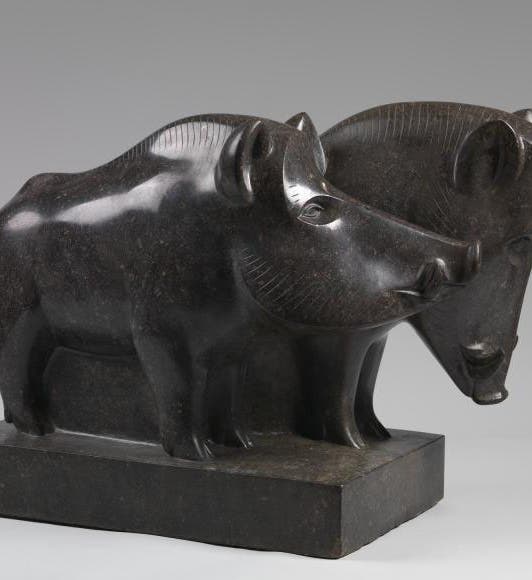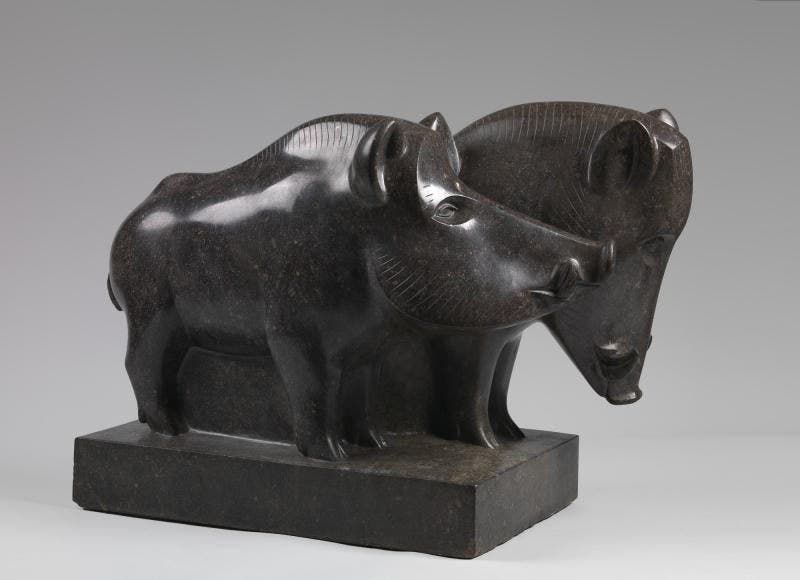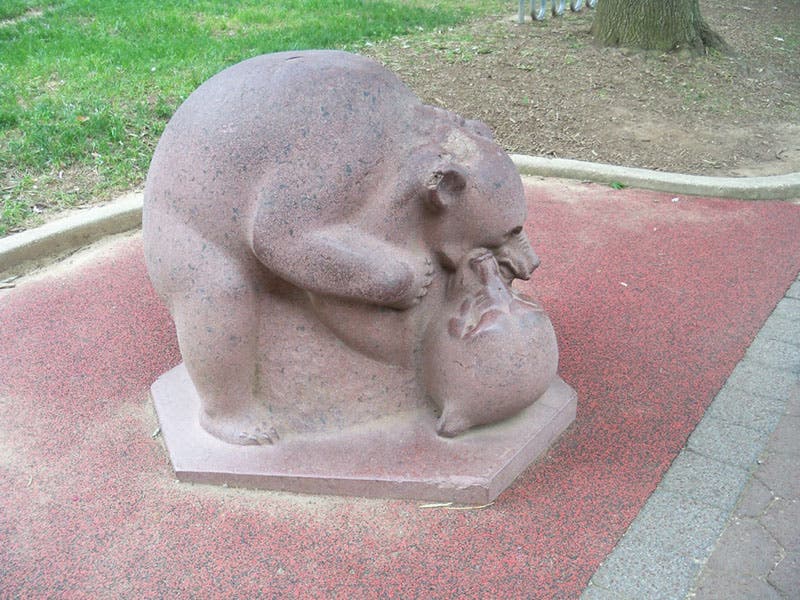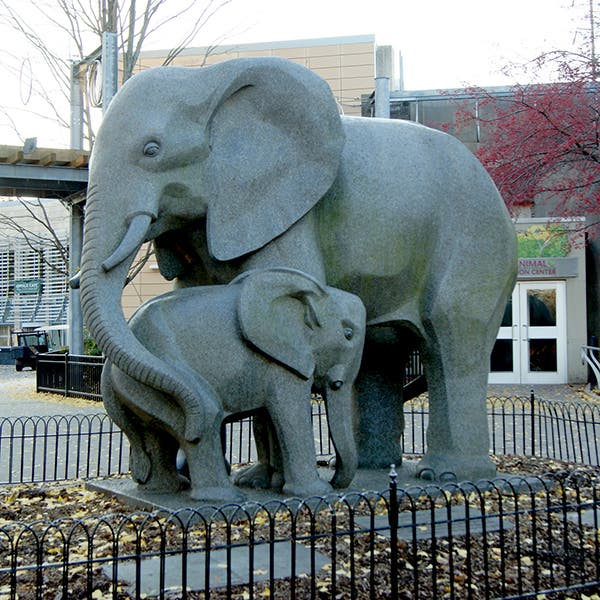Scientist of the Day - Heinz Warneke
Heinz Warneke, a German-American sculptor, was born near Bremen on June 30, 1895. After studying art in Berlin, he moved to New York City in 1923 and, except for some years in Paris, spent most of his adult life in the United States. He sculpted in a variety of genres, but he is best known as an animalier, a sculptor of animals.
One of his earliest sculptures was Wild Boars,which he carved in 1929 and which was acquired by the Art Institute of Chicago (second image). The pair, carved from granite, are delightfully posed, and are not as big as they look in photographs, the group measuring 12" x 17" x 9". Two years later, he carved a slightly larger pair from marble, and since they have a finer finish, we show the second Wild Boars first; they are in the Smithsonian Museum of American Art (first image).
As you can see from these sculptures and the ones to follow, Warneke did not strive for realism in his animal sculptures, although there is never any doubt as to what he is portraying. He would enlarge some features and gloss over others, and sometimes introduce lines that nature had not followed. But I find his Boars to be utterly charming, especially the marble pair at the Smithsonia
Warneke did a number for sculptures for public areas during the depression, as part of the New Deal; the red granite Tumbling Bears (1938) in the National Zoo was so commissioned. They bears are almost minimalist in form, but appealing nevertheless. The African Elephant and Calf that he did 25 years later for another zoo, the Philadelphia Zoological Gardens, is slightly cloying, with its mother-and-child motif, which is certainly overdone by animal sculptors, but possibly that was mandated by the Zoo. I do like the squared-off forms of both the large elephant and the calf, for no reason that I can articulate.
I could show you more, but we might as well jump to the sculpture for which Warneke is best known: the Nittany Lion of Penn State University, in University Park, Pennsylvania. Penn State had had a mascot for a long time, but in name only, and there was a drive at the school in the late 1930s to acquire a physical manifestation of their lion, which was in fact a local cougar (Mount Nittany is not far from the campus). Warneke was chosen to design and sculpt an appropriate lion; he offered the funding group several design choices, they picked one, and he carved it, from a large block of Indiana limestone. A photo was taken of Warneke with his lion at the time of installation – it is one of the very few photos of Warneke that one can find online (sixth image).
Warneke’s Nittany Lion was an instant hit, and still is; with its angular form, it is recognizably Warneke, but it somehow manages to project a feeling of stealth and power, in spite of its smoothed-over features. The sculpture has been the subject of some intercollegiate abuse over the years, tarred with Syracuse-orange paint on occasion, and now sporting several substitute ears, to replace those knocked off by vandal-fans of other rival schools. But the sculpture has stood up well, and there are not many universities that have a physical icon this handsome to represent their school.
Warneke died in 1983, at the age of 88. He is buried in the First Church Cemetery in East Haddam, Connecticut. His listing on findagrave.com includes a small photo of the older sculptor at work, and another photo of his very simple headstone.
William B. Ashworth, Jr., Consultant for the History of Science, Linda Hall Library and Associate Professor emeritus, Department of History, University of Missouri-Kansas City. Comments or corrections are welcome; please direct to ashworthw@umkc.edu.













